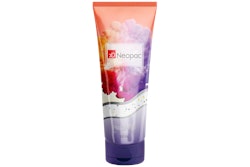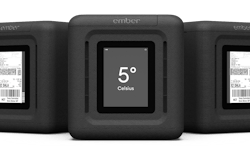Quick hits:
- Dr. Kuffner, an emergency physician and medical toxicologist, joins Keren Sookne to discuss how unit dose packages can help prevent prevent accidental unsupervised ingestions in children.
- Johnson & Johnson Innovation together with the packaging innovation team within Johnson & Johnson Consumer Inc. launched its Packaging Design QuickFire Challenge: Unit Dose Technologies to inspire innovators to bring potentially groundbreaking unit dose packaging options to the market – with a focus on child-resistant, user-friendly, non-reclosable designs.
- IDEEWISS’ Packlock blister card features a two-step mechanism in order to access the tablet via the blister card. By placing pressure on the card, a rectangular prism is formed, opening space between the backing of the card. The user can then push the pill through into that space and the pill drops down.
- Pharmaceutical Manufacturers Can No Longer Take a Pass on Sustainable Packaging
- 3 Healthcare Packaging Updates from PACK EXPO Las Vegas
 | Read the transcript below: |
Keren Sookne (KS): Thank you so much for joining us, Dr. Kuffner. For brief background, let's talk about how your experience led you to this area in the packaging community.
Dr. Ed Kufner (EK): Sure. It's a pleasure to be with you today. So, I'm an emergency physician and I'm a medical toxicologist. I've worked in different emergency departments over my career. I've worked in a poison center. Both in the ER and at the poison center, I've witnessed firsthand when kids come in, and I've treated young kids who've gotten sick after getting into medicines when they were not kept appropriately out of their reach, or potentially for medication errors related to dosing of those medicines. And when you're in that setting and a kid needs to be admitted to the hospital—some of them end up in the ICU and some of them get really sick. It's heartbreaking. It's hard for me as a clinician, it's hard for the staff, and it's certainly tough on the kids and families. And so for me today as the chief medical officer for Johnson & Johnson's Consumer Health division, we have doctors, nurses, pharmacists, and we all work together and one of the things we try to do is keep all the users of our products safe, especially young kids.
KS: Understandable. And thank you for that work that you do. It's just such important work, keeping children safe and so I’m really appreciative. Let’s talk briefly about the focus of the QuickFire Challenge for somebody who's not familiar with the program.
EK: Sure. Last year we worked with different people within the company, people within R&D, people from our safety team, people focused on innovation at J Labs and the innovation centers. We launched a QuickFire Challenge around unit dose packaging.
Some people may say, well, why would you want to innovate in this area? Why would you launch a challenge like this? Well, unit dose packaging really has the ability to help prevent accidental unsupervised ingestions. And that's when kids get into medicine when it's not appropriately kept out of their reach. Having worked in the ER, having worked at the poison center, some people may be surprised at actually the number of kids who come into emergency departments. So every day in the U.S., you'll have about 150 children. It's about four busloads of kids coming into emergency departments because of accidental unsupervised ingestions, and many more than that will have the parents or caregivers call the poison centers.
So packaging innovations in this area really have the ability to reduce accidental unsupervised ingestions. But then you say, well, you have a whole bunch of adults who are trying to use medicines appropriately. Many of them who may have, you know, limited dexterity with their hands, people who may have arthritis and they may have difficulty or struggle when they're just trying to use medicines appropriately. And if they can't get into the packages easily, that may compromise their health.
So, they may decide, “I'm not gonna take the medicine” or they may say, “Well, it's so difficult to get into this package, I'm going to take it out of the package and I'm going to put it in another type of package. And that's where kids can get into trouble.
On top of that, all of us, as individuals, as companies, we want to become more environmentally friendly. I think we all have a job to do in protecting the planet. At the end of the day, also if you can make the packaging a little bit easier for people you can hopefully enhance adherence and allow people to take the medicines more appropriately.
So, thinking about all those different things, we wanted to stimulate innovation and hopefully make packages that are child-resistant, that are senior-friendly, that are environmentally friendly, and that increase medication adherence. And one way of doing that was through the QuickFire Challenge, where we try to inspire innovators and we offered one hundred thousand dollars in grant funding, coming together and we're excited. We had a winner Packlock, it's a Swiss company and they really have a unique packaging design.
KS: What really stuck out to you about IDEEWISS AG’s Packlock? How could it protect more than a traditional blister card?
EK: Sure. I think it's important when you say like, how is it maybe potentially a little bit different just to understand blister cards in general. And so many types of blister cards have different backings that help control the amount of force that's needed to push a tablet through the backing. So if you have a backing that's easy to push the pill through, even young children can access that medicine relatively easily.
Whereas if you have backings that are stronger, or you use other technologies that people have seen like a bend-and-peel technology, it gets more difficult for children, but it also gets more difficult for the older patients, those with arthritis, people trying to use the products appropriately. So pack lock has this nice design and it has two-step mechanism in order to access the pill via the blister card. We know that two-step mechanisms really do help prevent accidental unsupervised ingestions because they're a little bit more difficult for kids to get into.
What Packlock has figured out how to do is you need to put some pressure on their card. And essentially when you put the pressure on the card, it creates this rectangular prism, and that opens up a space between the backing of the card. Once that space opens up, then the user can push the pill through and the pill drops down. And so we really think this design will both protect kids and hopefully make it easier for adults to appropriately access the medicine. Another thing about Packlock is because these are relatively traditional type of blister cards, we also think that these type of blister cards could be produced on packaging lines, which are used to produce many different types of blisters today, and that will make it easier to implement.
KS: Sure. Yeah. I mean, everyone is looking for that flexibility in their packaging operations. There was a recent interview you did that really showed how much you value global health—both human and planetary—which are of course interconnected. What do you feel is the intersection of child-resistant, user friendly, non reclosable designs with sustainability? For so long, these concepts really seemed at odds with each other at least at face value. Is this an area that you feel needs more work? And I'm just curious if there's any materials or suppliers or examples you wanted to highlight.
EK: Absolutely. When I think about it, you know, there's many different considerations. We've talked about some of them, right? It's all in striking the right balance. So, you want to strike that right balance between preventing the accidental unsupervised ingestions, encouraging adherence, and not overburdening adult users of these products. You also want to try to prevent medication errors. And as you said, obviously we want to protect the environment, be able to manufacture these at a reasonable cost.
At the end of the day, if you don't produce a package that really delights patients and consumers, people aren't going to use it and you really defeated the purpose. So when I think about it, it's not easy to strike that right balance. This is where I try to use my position as the chief medical officer within J&J's Consumer Health division to advocate for the safety and wellbeing of patients and consumers. And really try to prevent those curious young kids, which we all love, but trying to prevent them from becoming patients.
I try to encourage and motivate the R&D teams to innovate. And one of my jobs is to try to make sure that we're striking that right balance. It’s definitely not easy, but I think with the innovations, like Packlock, new designs, new technologies, I think we're really moving in the right direction.






















